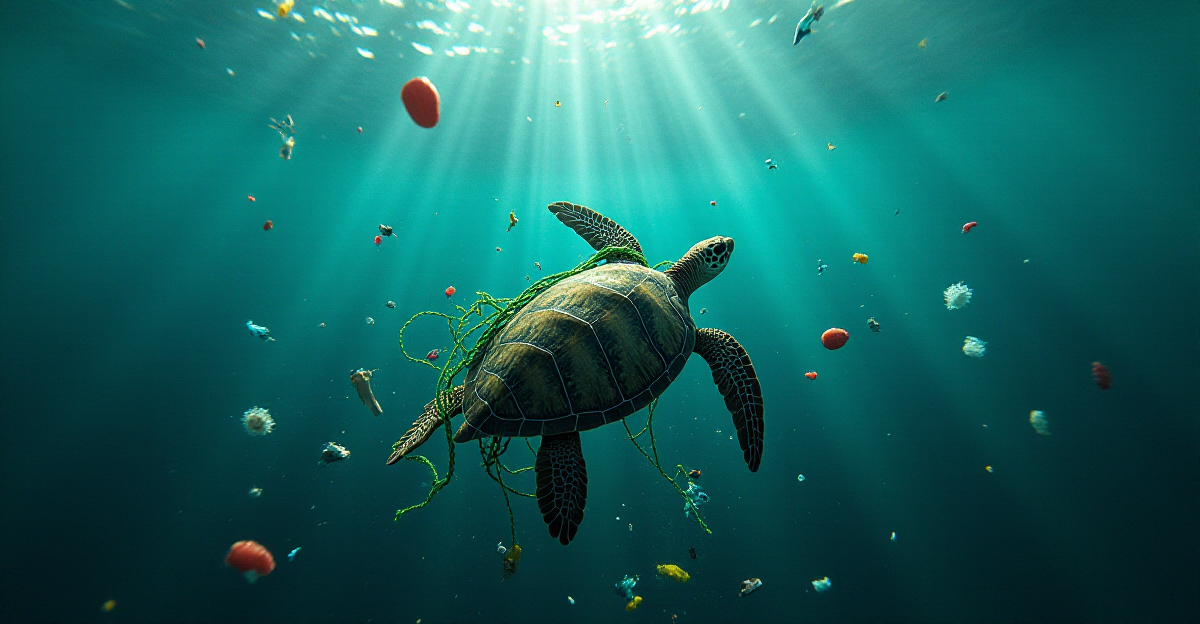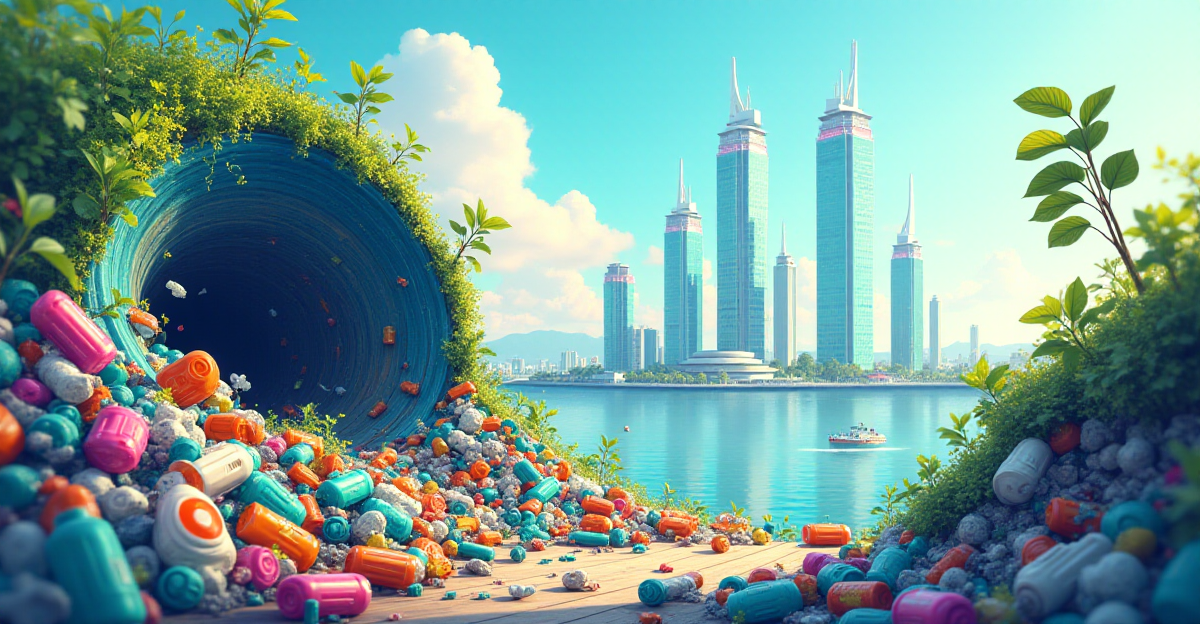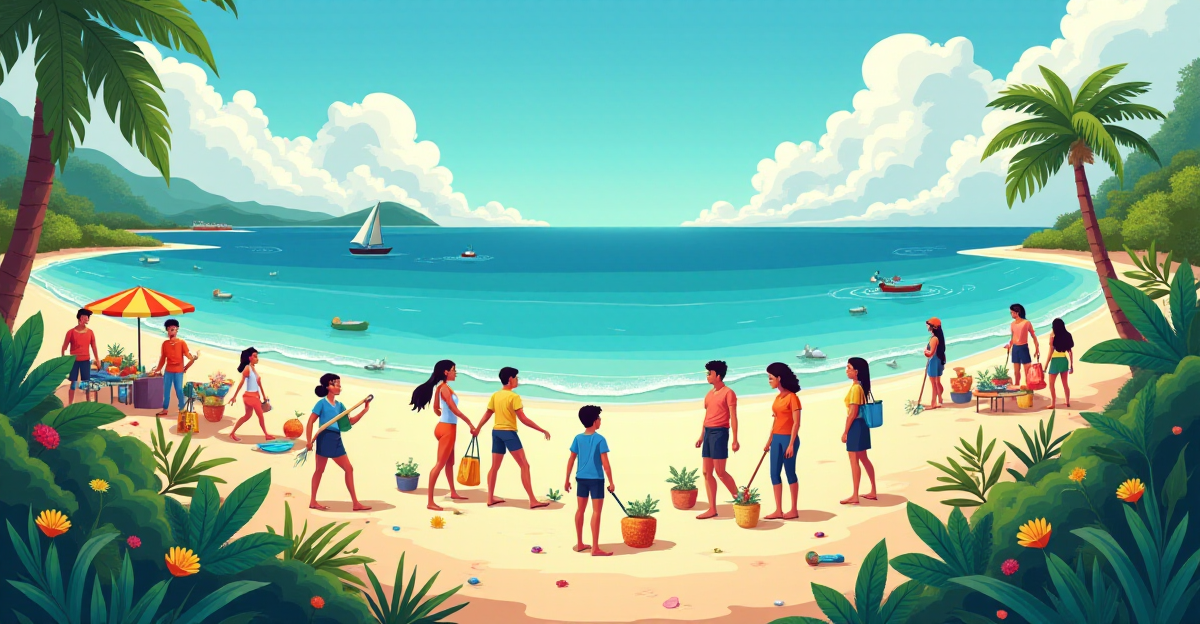An increasing environmental issue, plastic waste is being addressed by creative ideas developed by experts. The most recent studies on plastic pollution, effects on ecosystems, and innovative methods in development to lower and eventually eradicate plastic waste are investigated in this paper.
Table of Contents
- The Problem of Plastic Pollution: A Call to Action
- How Plastic Affects Ecosystems
- Innovative Solutions to Plastic Waste
- The Future of a Plastic-Free Lifestyle
- Extra’s:
The Problem of Plastic Pollution: A Call to Action

Have you ever given the effect of plastic contamination on our earth some thought? Every year, we produce shockingly large volumes of plastic waste, which is a serious environmental hazard. From our landfills to our oceans, it is influencing everything and a difficult problem that we must solve. Protecting the environment has always excites me, hence it’s sad to watch the damage plastic contamination is causing. Still, avoid hopelessness! Working together, we can create a future free from the negative consequences of plastic garbage.
The Scope of the Problem
A ubiquitous problem, plastic contamination shows itself in many different environments. The sheer volume of plastic we create and discard has resulted in a build-up of plastic garbage endangering the environment generally, human health, and wildlife.
- Ocean Plastic: A significant amount of plastic waste ends up in our oceans, harming marine life. Sea turtles often mistake plastic bags for jellyfish and eat them, which leads to suffocation and starvation. Fish can also become entangled in plastic waste, limiting their movement and causing injuries. This is an alarming situation that we must address.
- Landfill Accumulation: Landfills are overflowing with plastic waste, taking up valuable space and releasing harmful chemicals into the environment. Plastic decomposition releases greenhouse gases, contributing to climate change.
- Microplastics: Tiny plastic particles called microplastics are everywhere, from the soil and water to the air we breathe. These microplastics can be ingested by animals and humans, and they could potentially affect their health.
How We Can Make a Difference
We must put thorough plans into effect to aggressively lower plastic manufacturing, advance environmentally friendly substitutes, and enhance waste management techniques. By changing our way of life to be plastic-free, everyone of us can significantly help to lower our plastic footprint. This entails picking reusable substitutes, supporting companies that give sustainability top priority, and deliberately avoiding single-use plastics.
I recall coming into a terrible picture of a marine turtle caught in a plastic net. It served as a sobering reminder of the harm we might cause to our surroundings. Using biodegradable substitutes like water bottles and reusable shopping bags and by selecting goods with little packaging, each of us can help. Important actions are recycling and composting; but, we have to do more. Environmental remedies addressing the underlying source of the issue should be our main focus.
Here are some actions you might do to assist lower plastic pollution:
- Bring your own reusable bags to the grocery store.
- Choose products with minimal packaging.
- Say no to single-use plastic straws.
- Recycle and compost properly.
- Support businesses that are working to reduce their plastic footprint.
By acting to preserve our earth for next generations, everyone of us can change things.
Each of us has a duty to help to preserve our earth and cut plastic waste. Our daily actions can significantly help to lower plastic pollution by small adjustments. Let us cooperate to provide everyone a better and healthier future.
How Plastic Affects Ecosystems

Have you ever given the plastic bag you used at the supermarket shop or the bottle you thrown in the garbage more thought? Those apparently little deeds can have a terrible effect on the ecosystems of our earth, upsetting the fragile equilibrium of nature and endangering many species. The plastic pollution catastrophe we are facing calls for us to consider the effects of our decisions and act to save our earth.
From landmasses to aquatic life, plastic pollution influences everything. Imagine a marine turtle swallowing a plastic bag mistaking it for a jellyfish. Common occurrence, this is a sad illustration of how plastic pollution damages marine life. Still, the issue goes much beyond our waterways. Many times ending up in landfills, plastic garbage takes hundreds of years to break down and releases toxic chemicals into the ground and groundwater, thus polluting the surroundings and influencing plant and animal life.
The Devastating Impact on Marine Life
Our oceans wind up with the great bulk of plastic garbage. Small bits of this plastic, also referred to as microplastics, are consumed by marine life Many times confused for food, these microplastics cause a wide range of health issues including malnutrition, suffocating, and even death. Plastic garbage can also entangle fish, therefore impairing their capacity for swimming and causing damage. I once came over a moving video of a marine turtle having a plastic straw stuck in its nose. The turtle was obviously in discomfort and found difficult to breath. This encounter let me understand how serious the plastic pollution issue is.
The Threat to Terrestrial Ecosystems
Found in the soil as well, microplastics could endanger the health of terrestrial animals. In addition, plastic trash can clog rivers, mess with drainage, and provide disease-carrying insects somewhere to breed.
Finding Solutions
Environmental solutions are what we must identify to shield our ecosystems from the negative consequences of plastic contamination. Among the numerous creative ideas under development are biodegradable plastics, plastic recycling programs, and even technology leveraging enzymes to breakdown plastic. However, we must go beyond these technical fixes and deal with the underlying issue: our dependence on one-time use plastic.
Changing your lifestyle to be “plastic-free will help you make a difference.” We can choose goods in refillable containers, carry our own reusable bags to the grocery shop, and utilize reusable water bottles. These few adjustments will assist to lower the plastic waste load ending up in our landfills and oceans. Recall, every little action counts!
Innovative Solutions to Plastic Waste

Right, plastic contamination is a huge issue. It’s all around! Plastic trash is seriously damaging our globe from our oceans to our landfills. It’s choking marine life, poisoning our water, and damaging our surroundings. Fortunately, though, some quite amazing environmental solutions are under development to assist with crisis management. These creative ideas inspire a better, healthier future.
Addressing the Root of the Problem
Reducing plastic manufacture and consumption is one significant approach to help to solve plastic pollution. By choosing consciously, everyone of us can change things. We might choose reusable substitutes instead of straws and single-use plastic bags, for instance. Is a shopping bag or reusable water bottle something you carry? These little adjustments can really help to lower plastic waste. Additionally we may assist businesses dedicated to sustainability and lessening their environmental impact. Living in a society with less plastic bags and straws would be fantastic. Imagine a society when using reusable substitutes is the standard!
Embracing Circular Economy Solutions
Adopting circular economy ideas is another interesting direction. Plastic garbage can be used again rather than thrown away. This is generating creative recycling programs all around the globe. By turning plastic garbage into useful materials, we can reduce the necessity for fresh manufacturing. For instance, Project RE:SOURCE, which partners Ocean Conservancy with the World Wildlife Fund, gathers plastic trash from coastal towns and beaches. This initiative illustrates how we may cooperate to solve plastic pollution. Apart from gathering plastic waste, businesses are creating creative ideas such upcycling. Using recycled plastic, upcycling creates brand-new, premium goods. This shows how well circular economy ideas might control waste.
Technological Innovations for Plastic Waste Management
Developing creative solutions to control plastic waste is much aided by science and technology. Advanced recycling methods under development by scientists turn trash plastic into precious commodities. Furthermore under investigation are enzyme-based techniques for breaking down plastic, so providing still additional choices for handling this trash. One innovative approach is known as plastic pyrolysis. This technique breaks down plastic garbage into its component parts using heat. New goods can thus be produced using these elements. Moreover, studies on biodegradable plastics are becoming more and more important since they present a possible way to help to lower the plastic pollution in our surroundings.
The Future of a Plastic-Free Lifestyle

It is terrible to see plastic garbage washing on a lovely beach. It reminds us sharply of the plastic pollution issue endangering our planet. Still, within this difficulty, there is optimism. Starting with little actions each of us can do, I think we have a plastic-free future.
Living a Greener Life
Sometimes you wonder about how your daily decisions impact the surroundings. By changing our behavior, everyone of us may lower our plastic footprint. Why not use robust canvas totes rather than throw-away plastic bags? Cut out plastic straws and choose reusable metal or bamboo substitutes. Sort glass containers above plastic ones. Millions of these little changes add up to a real difference.
I recall first beginning to cut my plastic consumption. Although it felt daunting, I soon understood that all it took was little, slow adjustments. I started lugging a reusable water bottle almost everywhere. I started always carrying my own reusable bags and stopped using plastic bags at the grocery shop. These little deeds accumulated to clearly affect my daily life, and knowing I was supporting sustainable practices made me feel successful.
Empowering Communities and Businesses: Building a Plastic-Free Future Together
Living sustainably calls for group efforts by companies and communities, not only personal decisions. Fortunately, there are motivating cases of this occurring. I have seen nearby towns planning beach clean-ups and running creative recycling initiatives. Companies are adopting sustainability more and more by making investments in recycled goods and environmentally friendly substitutes including reusable packaging.
I recently came with a neighborhood retailer that really reflects plastic-free living. Their goods come in biodegradable packaging, and they provide glass bottle refills for cleaning agents. This not only helps to cut plastic waste but also motivates consumers to live more sustainably. Their dedication to eco-friendly substitutes inspires me.
By selecting their products and pushing others to follow suit, let’s help businesses standing against plastic pollution. We can also help local projects by lending our time to community clean-ups or awareness campaigns. Working together, we can bring about a time when sustainable practices will be the standard rather than the exception.
Everybody may bid farewell to plastic garbage and welcome a better, more sustainable planet. Start today by moving one tiny bit toward plastic-free living. You have to do what?
Extra’s:
To delve deeper into the interconnectedness of plastic pollution and the natural world, you can explore our post on “Biodiversity and Conservation: Preserving the Planet’s Rich Ecosystems,” which delves into the profound impacts of pollution on diverse ecosystems. Understanding the consequences of plastic pollution on our planet’s health requires a multi-faceted approach, and examining the vital role of sleep in our well-being can offer valuable insights. If you’re interested in exploring the science behind sleep and its effects, you can check out our article, “The Science of Sleep: Understanding Why We Sleep and How It Affects Us.”
For a comprehensive overview of the latest research and data on plastic pollution, we highly recommend checking out the “2024 Report: New perspective on global plastic pollution!” This report provides a wealth of information on the global plastic pollution crisis, highlighting key trends, challenges, and emerging solutions. To discover the forefront of technological innovations combating plastic waste, we encourage you to explore the “10 Innovative Technologies Combating Plastic Waste” article. This article provides an insightful look into cutting-edge solutions that are transforming the way we manage plastic waste and paving the way for a cleaner, more sustainable future.












1 thought on “Plastic Pollution Solutions: Innovative Ways to Tackle the Global Crisis”